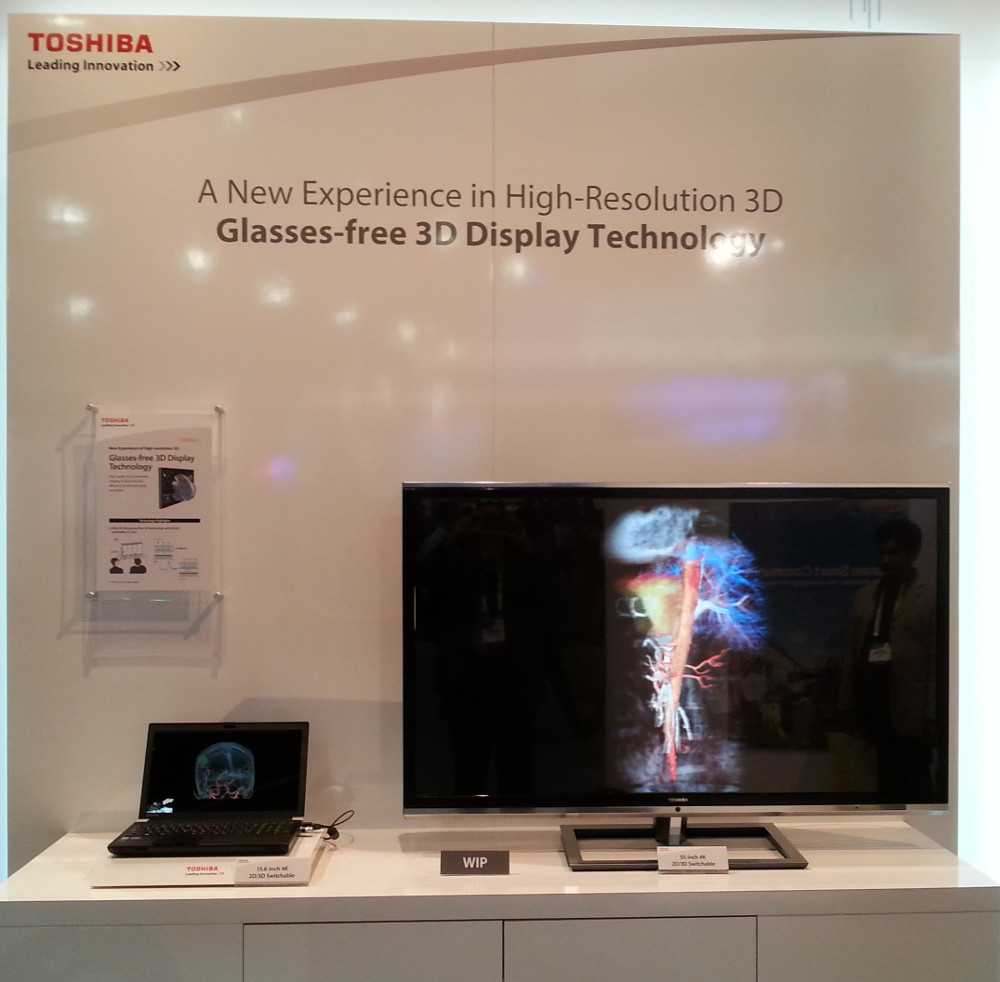Toshiba Corporation used CES 2015 to showcase a new glasses-free 3D 15.4” 4K resolution display. By using a GRIN (GRadient INdex) lens, Toshiba was able to achieve very low cross-talk between the left and right views. More importantly, the GRIN lens is switchable allowing 4K resolution in 2D mode and FHD resolution per eye in 3D mode. This addresses one of the major drawbacks of passive optical layers like lenticular or parallax barrier type – the inability to be able to offer a very clear image in 2D mode.
The switchable GRIN lens is an active element based on liquid crystal technology. Prototypes of this type of lens were first shown about 5 years ago, so Toshiba is not the first to develop the technology. As shown in the graphic, it is basically a second LCD panel bonded on top of the primary imaging LCD panel that creates a lens array over the primary LCD panel. This lens array is similar to a lenticular lens array except for the switchable component and the GRIN aspect.
The active GRIN lens element only has electrodes on one side of the panel. In the off mode, light passes through this panel and is unaffected (except for some minor distortion and a small loss of light). In the 3D mode, the electrodes have voltage that changes the orientation of the liquid crystal molecules creating a gradient in the index of refraction in the panel. This is controlled to create the refractive effect of a lens. According to the diagram, the lenticular lens is oriented in a vertical manner, but booth staff suggested it was oriented in a diagonal direction.
Toshiba has worked to reduce the abnormal alignment of liquid crystal molecules near the boundaries of liquid crystal lenses by optimizing the orientation of the liquid crystal molecules and the angle of the liquid crystal GRIN lens relative to the direction of polarization of the liquid crystal panel. As a result, crosstalk has been reduced to a very low and acceptable 2%, against 5% in conventional 3D displays.
At CES 2015, Toshiba demonstrated the GRIN lens technology on a 55” 4K-UHD panel as well as a 15.4” 4K-UHD panel. These are being aimed at professional applications like medicine, as Toshiba is not sure if the TV markets is ready for these displays now (and other reports suggest Toshiba may be getting out of the TV business [Toshiba is Re-Assessing its US TV Plans]). Toshiba already manufactures some professional imaging products in the CT, MRI and Ultrasound fields, so having a 3D display for these capture devices makes sense.
Moving forward, Toshiba said it plans to “fuse the new technology with a partial 2D/3D switching function which can be applied to any screen size and position, and to aim for its rapid commercialization in B2B industrial and medical products that require glasses-free high-definition 3D displays”.
We judged the depth volume on the 55” to be about +/- 10-12 inches and about +/- 3-4 inches on the 15.4” demo. Image quality was good.
 Laptop 3D without glasses demo in Toshiba booth at CES 2015
Laptop 3D without glasses demo in Toshiba booth at CES 2015

